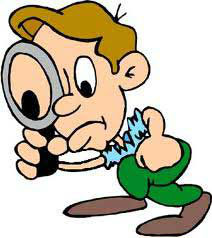By JENNY STRASBURG and SCOTT PATTERSON
The chief executive of Knight Capital Group Inc. KCG +0.86% told Congress in June that rapid-fire trading, the backbone of its business, is a boon to the overall stock market. He cited a study that cautioned regulators against unintended consequences of curbing the practice known as high-frequency trading.
It was a 2010 study Knight itself had commissioned. Its lead author that year joined the board of a stock-exchange company that caters to high-speed traders and is partly owned by Knight.
Less than two months after the Knight executive's testimony, Knight nearly imploded when computerized trades went haywire, costing it $461 million in losses. Last week, the hobbled firm agreed to a takeover.
High-frequency trading firms are fighting to fend off regulation as scrutiny of their practice of unleashing blizzards of orders coincides with repeated technical glitches in the markets. As the firms work to convince policy makers their practices are benign or even beneficial, one of their primary tools has been research seeded by the industry itself, promoted by lobbying that has increased in recent years.
Yet research conclusions presented as firm endorsements of high-frequency trading don't always square with reservations harbored by some researchers themselves, who question how far existing studies can go to pin down the effect rapid trading has on the overall market.
Dark Markets
A series investigating a new age of murkiness in the financial markets and the challenges that creates for investors. Previously:
- Big Lots Chief Probed by SEC
- Executives' Good Luck in Trading Own Stock
- For Superfast Stock Traders, a Way to Jump Ahead in Line
- Investor Hazard: Zombie Funds
- Traders Navigate a Murky New World
- Source's Cover Blown By SEC
- U.S. Plans Charges on Bond Fraud
The studies have value but also shortcomings, says the researcher hired and quoted by Knight, James Angel, a finance professor at Georgetown University. "Not even the exchanges have all the data," Mr. Angel said in an email. "We see a big jumble and it is impossible to pick out the good from the bad."
Mr. Angel said Knight's payment didn't influence his conclusions. Knight's sponsorship was noted by the firm's CEO, Thomas Joyce, in his appearance before Congress in June, though not in written testimony ahead of the hearing that also quoted the Angel paper. A spokeswoman for Knight said the Jersey City, N.J., firm "supports research that helps foster a better understanding of market structure."
Other research that rapid-fire-trading firms have cited includes additional papers paid for by such firms and a study whose author was hoping to sell software to computerized traders.
In high-frequency trading, computers place thousands of buy and sell orders and instantly cancel many of them, having placed them just to test demand. Such trading has come to dominate U.S. stock markets, making up more than half of daily volume, and increasingly influences how currencies, commodities and other assets trade. It is at the center of a debate about the future of financial markets.
Defenders say high-frequency trading keeps markets lubricated with a constant supply of buy and sell orders that enables all participants to trade more efficiently and get better pricing.
High-speed traders, supporters add, have helped foster competition among exchanges and other trading venues, lowering commission-based fees for small investors and helping bring down overall costs for mutual-fund managers.
Another benefit some cite: Technology innovations spurred by high-speed traders serve to connect more investors to more trading venues, broadening their options in the markets.
Previously
Critics, for their part, worry that the traders' order torrent makes markets more opaque, less stable and ultimately less fair.
Concern has risen amid a lengthening list of unnerving market malfunctions: the "flash crash" free fall in May 2010; the bungled initial public offering in March of a computerized stock exchange; the poorly executed Facebook Inc. FB -2.30% public offering in May on the Nasdaq Stock Market NDAQ -0.08% ; and Knight's August debacle.
A Senate committee delved into high-speed trading last week. And regulators who are doing a broad review of market structure are probing, specifically, whether stock exchanges have sometimes given rapid-fire firms a way to trade ahead of ordinary investors. Exchanges deny doing so but acknowledge providing the fast traders with certain advantages, which the exchanges say are of benefit to all.
In this atmosphere, fast-trading firms have stepped up their Washington presence. Their spending on lobbying has averaged $2.3 million for the past two years, more than double the 2008-2010 yearly average, according to an analysis of data compiled by OpenSecrets.org, a site run by the nonpartisan Center for Responsive Politics.
Some fund managers handling assets for small investors have pushed back, urging lawmakers and regulators to examine how rapid-fire trading affects customers like theirs.
In September, Andrew Brooks, head of U.S. equity trading for mutual-fund giant T. Rowe Price Associates Inc., TROW -0.71% told senators holding a hearing on computerized trading there are "problems below the surface" of markets dominated by speed. He called the practice of blasting and instantly canceling masses of orders "inherently wrong," saying the "continued push for speed is not producing any marginal benefit to investors and in fact may be detrimental." Mr. Brooks said market rules and regulations "seem to further enable those with short-term profit incentives," as opposed to those focused on the long-term value in companies.
So far, the high-speed firms have avoided onerous regulation. In 2009, proposals surfaced to impose a fraction-of-a-cent tax on each stock trade. The goal, in the wake of the financial crisis, was to deter speculation and bolster longer-term investors' faith in markets. To high-speed firms, it was a threat to profits.
Chris Concannon, an executive at one firm, Virtu Financial LLC, hired Christopher Culp, an adjunct finance professor at the University of Chicago, to write a paper summarizing studies of trading taxes. Mr. Culp's "Financial Transaction Taxes: Benefits and Costs," published in early 2010, said such a tax was "unlikely to generate significant revenue and…very likely to interfere significantly with the performance of the U.S. financial markets."
Mr. Concannon circulated the paper among legislators and their staffs. He and Mr. Culp declined to say how much Virtu paid for the study, but both said its findings remain valid. Mr. Culp, who cited Virtu's sponsorship in his paper, wrote it not in his university role but as a paid consultant.
Rapid-trading firms weren't the only ones fighting a transaction tax. So were big Wall Street firms, some of which have stakes in computerized stock exchanges that cater to the fast traders. The Wall Street firms said a tax would raise costs for investors big and small.
“To plead their case with politicians, fast-trading firms rely on studies they commissioned.”
The idea faded away as stocks recovered. Scrutiny of high-frequency firms didn't, however, and began to focus on whether technology was giving them such speed they could slip ahead of other investors.
Mr. Concannon, a former executive at Nasdaq OMX Group, asked an ex-colleague if Nasdaq would make trade data available for studies. When Jonathan Brogaard, then a Ph.D. candidate at Northwestern University, sought access, Nasdaq arranged for a stream of some one billion data points to be sent to him by secure line.
Mr. Brogaard says he will never forget the day the data file came through. By chance, it arrived on May 6, 2010. At about 2:40 that afternoon, with the Dow Jones Industrial Average already off several hundred points, the market went into a free fall. In minutes, it was down nearly 1,000 points—before just as mysteriously surging back up.
Two months later, Mr. Brogaard's paper, "High Frequency Trading and Its Impact on Market Quality," came out. He hadn't been able to study data from the flash crash, but based on Nasdaq data found no evidence high-speed traders "withdraw from markets in bad times."
Mr. Brogaard didn't disclose in his paper that he had worked as a consultant for a firm that sells advice on computer-driven trading strategies, or that he was trying to start a firm that would sell software to computer-driven fund managers. He says no disclosure was necessary: His consulting work ended in 2009, the software company wasn't an active business but just a "small side project," and he details his work history elsewhere.
Regulators drew a different conclusion about speedy traders' behavior in times of turmoil. A paper co-written by Commodity Futures Trading Commission chief economist Andrei Kirilenko said that in the flash crash, such firms "exacerbated the downward move in prices," many selling as the market sank. If so, they weren't supplying the dense buy-and-sell order flow they cite as a benefit they provide.
The limited nature of data for studying rapid-fire trading's effects is a point several researchers cite. Messrs. Kirilenko and Brogaard later collaborated on a paper noting that Nasdaq is just one of the venues used in such trading, restricting the value of the Nasdaq data.
"For what I do, data is the biggest constraint. It makes it the most difficult to be able to answer questions," Mr. Brogaard said in an interview.
Andrew Lo, a Massachusetts Institute of Technology finance professor, said many studies fail to capture market risks because of researchers' access to only a sliver of trade data."The key is to stick to the facts, and the problem is that we don't have all of the facts," Mr. Lo said.
Knight was seeking a fuller view of the trading when it commissioned Mr. Angel's study. Knight agreed to pay him and two associates about $30,000, said people familiar with the terms. Georgetown's business school said Mr. Angel violated no rules in taking on the task.
His February 2010 paper, "Equity Trading in the 21st Century," appeared on SSRN, a website where academic papers are uploaded. The paper said that thanks to computerized trading, stock investors "obtain better service at a lower cost," because of a narrowed gap between the prices buyers bid and sellers ask.
It urged regulators to "be sensitive to the 'unintended consequences' of poorly considered responses to concerns now being raised about recent changes in the trading environment, many of which are not universally understood." A note said Knight had commissioned the paper "to better inform parties interested in understanding innovations in market structures," adding the authors had editorial control.
A lobbyist for Knight, David Franasiak of Williams & Jensen PLLC, showed the paper to regulators and congressional staffers. Some later repeated conclusions from it in hearings and meetings, said people involved in the meetings.
As Mr. Angel's paper was being circulated, he was negotiating to join the board of Direct Edge Holdings LLC, a stock-exchange operator that caters to high-speed traders and is roughly 20% owned by Knight. Direct Edge said in late April 2010 he was joining its board.
Four days later, Mr. Angel told the Securities and Exchange Commission in a comment letter that "most high-frequency technology benefits the market," and "the equity market structure is working better than ever, so don't mess it up." His letter didn't mention his tie to Direct Edge. Mr. Angel said SEC officials knew about it and he didn't feel he needed to state it. Direct Edge declined to comment, as did the SEC.
A firm that lobbies for fast-trading firms, Patton Boggs LLP, sent lawmakers abstracts of 10 studies of such trading and the markets. They included Mr. Angel's and Mr. Brogaard's plus research by high-speed trading firms and a stock exchange. Patton Boggs declined to comment.
Two Republican representatives, Jeb Hensarling of Texas and Spencer Bachus of Alabama, cautioned in the summer of 2010 against too-hasty regulation, in letters to the SEC and the House Financial Services Committee. Regulators shouldn't "shoot the computers first and ask questions later," one letter said.
Mr. Bachus's campaign received $24,700 from people connected with Credit Suisse Group, CSGN.VX -0.58% which has stakes in computerized trading firms and exchanges, for the 2012 election cycle, according to OpenSecrets.org; the site shows Mr. Hensarling, chairman-elect of the financial-services panel, receiving $10,000 for his campaign from people connected to fast-trading firm Hudson River Trading Group. Credit Suisse and Hudson River declined to comment.
An aide to Mr. Hensarling said those who support him "have done so because they believe in the principles of free enterprise and freedom that he has consistently advanced."
Mr. Bachus said he appreciates the tough task the SEC faces in responding to high-frequency traders, who he said "create a lot of noise in our markets by sending out thousands of meaningless quotes and orders without any interest in seeing the trade executed" and "on occasion have corrupted the market for their own benefit."
This June, a month after the marred IPO of Facebook, the House financial-services panel held hearings on market structure. "There has never been a better time to be an investor," Knight's Mr. Joyce said in written testimony, citing an excerpt from the Angel study crediting computerized trading for better, cheaper trades for individual investors. Mr. Franasiak, the lobbyist, told congressional staffers in July Mr. Angel's paper was "required reading."
Then came Knight's wave of accidental trades, which it blamed on a faulty software update. Afterward, Mr. Franasiak urged congressional aides to accept occasional technology blunders and focus on market efficiency, said people familiar with the matter.
"The market is an evolving thing," Mr. Franasiak said in an interview. "The SEC needs to use data to make the case for changes [not] raw gut reactions."
Knight's losses led it to seek rescue financing and eventually put itself on the block, leading to a deal last week to be sold to high-frequency firm Getco LLC of Chicago.
The fast-trading industry's efforts to shape policy makers' perceptions continue. Mr. Concannon of Virtu, calling studies cited by both critics and advocates dated, is pushing for better research. "We're trying to study this thing called 'HFT,' and we don't even know what it is," he said. "The assumptions are flawed."
One day in September, as the sun set over the Potomac, trading officials and lobbyists clinked wine glasses with regulators, stock-exchange executives and academics on the Georgetown campus, where they had gathered for a conference on high-speed trading and market structure organized by Mr. Angel and colleagues. The professor's research continues. Knight has agreed to pay him to update his 2010 study.
Write to Jenny Strasburg at jenny.strasburg@wsj.com and Scott Patterson at scott.patterson@wsj.com
A version of this article appeared December 28, 2012, on page A1 in the U.S. edition of The Wall Street Journal, with the headline: High-Speed Traders Race To Fend Off Regulators.



![[image]](http://si.wsj.net/public/resources/images/OB-SN418_DarkMa_D_20120409110015.jpg)



![[image]](http://si.wsj.net/public/resources/images/P1-BJ697A_HFTLO_NS_20121227170907.jpg)
![[image]](http://si.wsj.net/public/resources/images/P1-BJ696_HFTLOB_NS_20121227170903.jpg)


